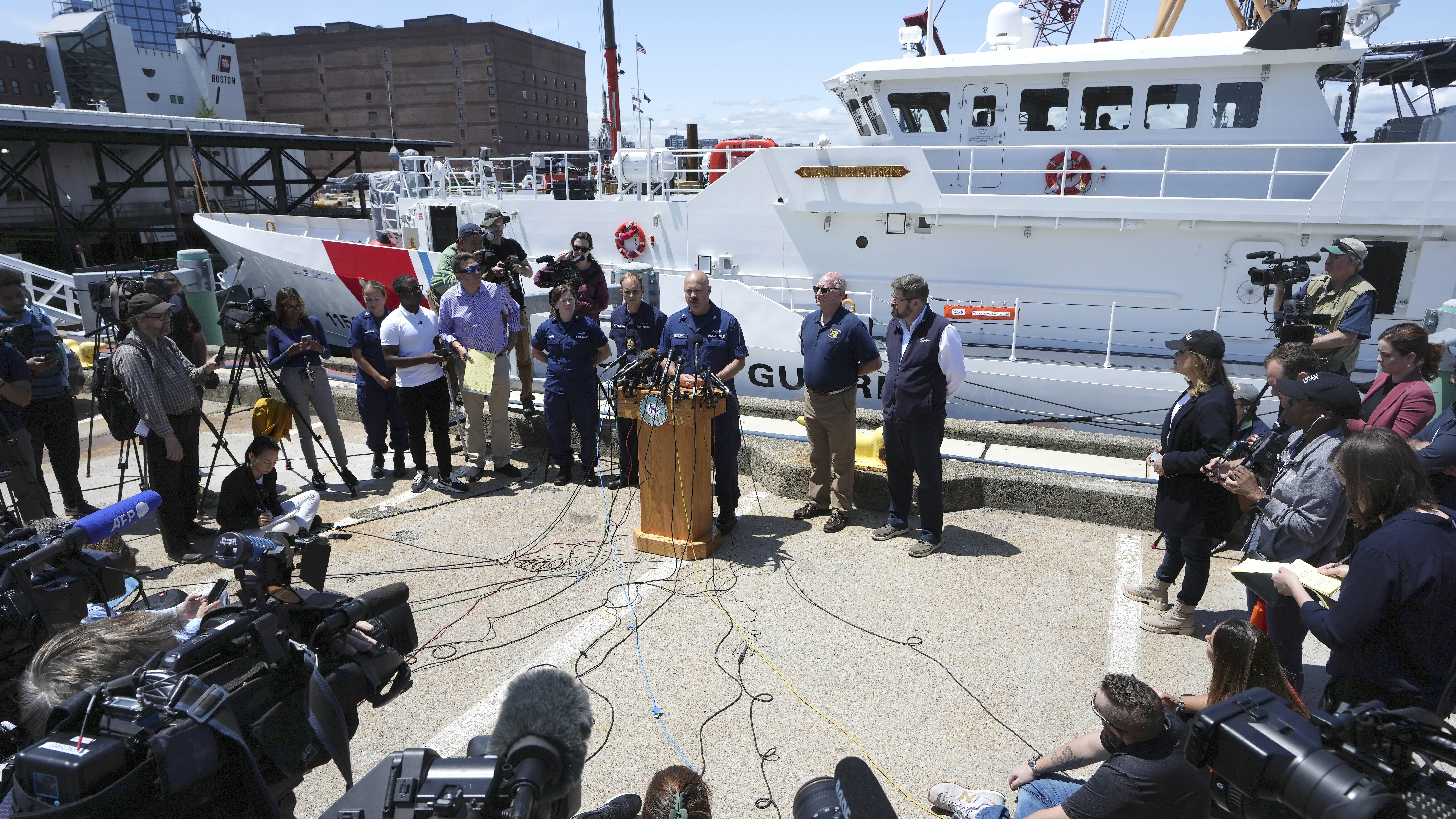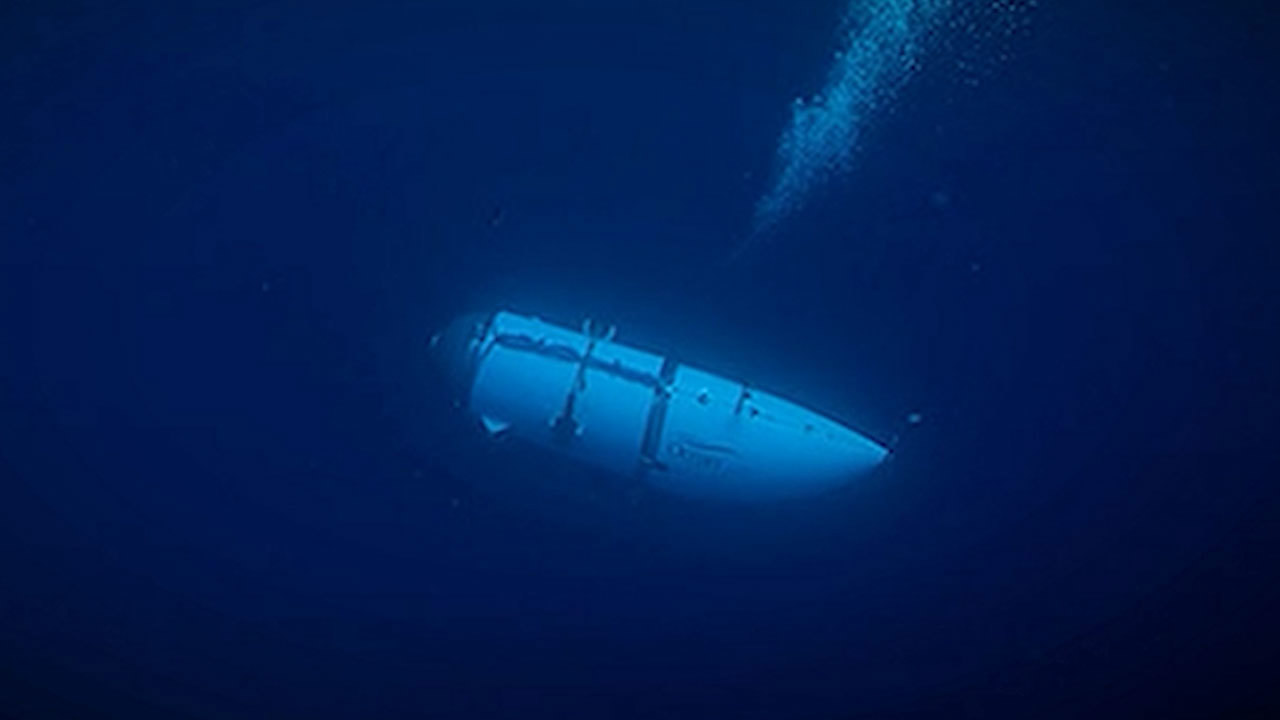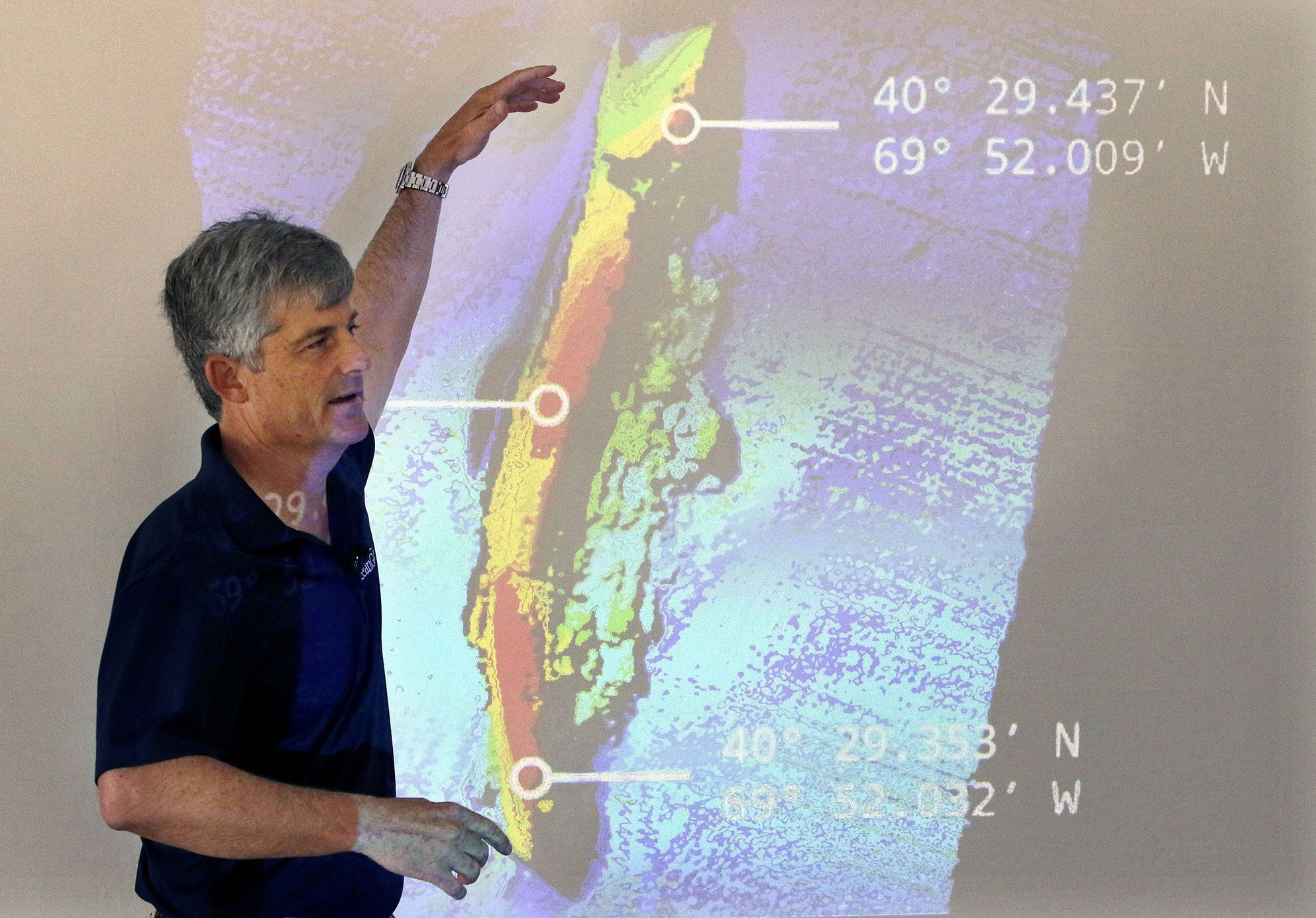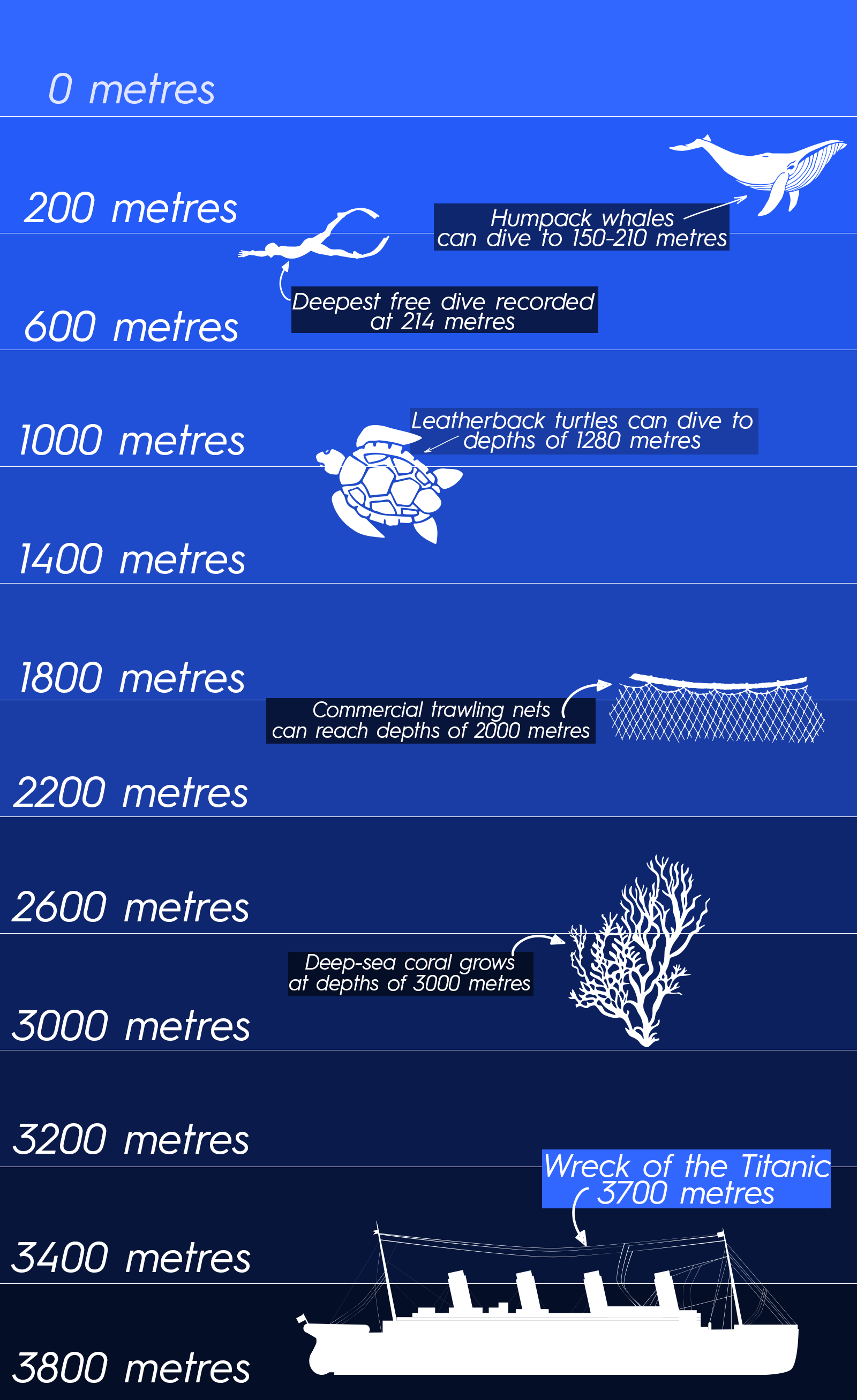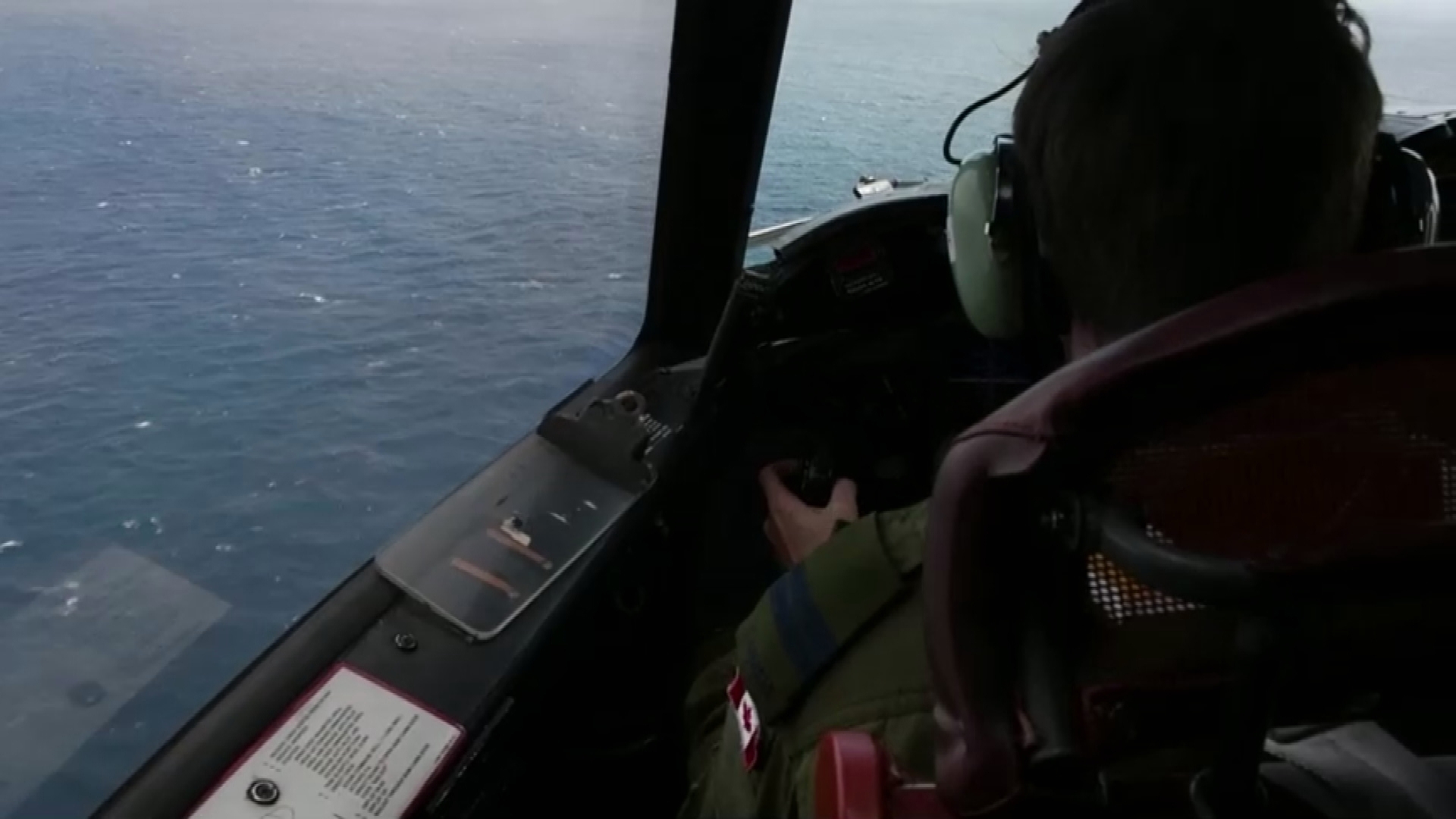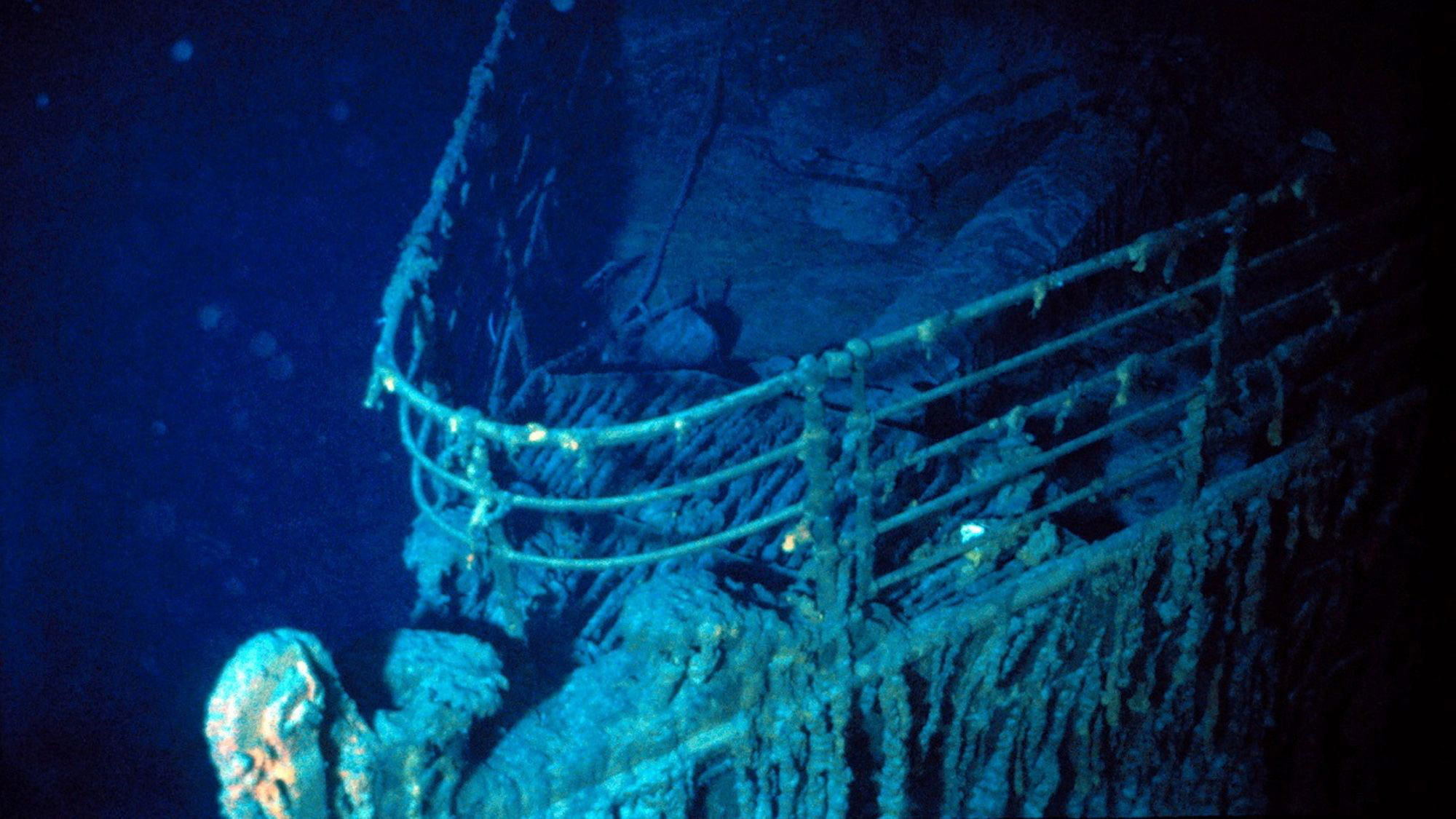The race against time to find a submersible that disappeared on its way to the Titanic wreckage site has entered a new phase of desperation today as the final hours of oxygen possibly left on board the tiny vessel ticked off the clock.
Rescuers have rushed more ships and vessels to the site of the disappearance, hoping underwater sounds they detected for a second straight day might help narrow their search in the urgent, international mission.
But the crew had only a four-day oxygen supply when the vessel, called the Titan, set off around 6am on Sunday.
READ MORE: 'Got a bad feeling': Missing billionaire's friend withdrew from earlier sub dive
Even those who expressed optimism warned that many obstacles remain: from pinpointing the vessel’s location, to reaching it with rescue equipment, to bringing it to the surface — assuming it’s still intact.
And all that has to happen before the passengers’ oxygen supply runs out.
The full area being searched was twice the size of the US state of Connecticut in waters as deep as 4020m.
Captain Jamie Frederick of the First Coast Guard District said authorities were still holding out hope of saving the five passengers onboard.
“This is a search and rescue mission, 100 per cent,” he said on Wednesday.
READ MORE: Titanic tourism is a thing, and it's dangerous
The area of the North Atlantic where the Titan vanished on Sunday is also prone to fog and stormy conditions, making it an extremely challenging environment to conduct a search-and-rescue mission, said Donald Murphy, an oceanographer who served as chief scientist of the Coast Guard’s International Ice Patrol.
Meanwhile, newly uncovered allegations suggest there had been significant warnings made about vessel safety during the submersible’s development.
Frederick said while the sounds that have been detected offered a chance to narrow the search, their exact location and source hadn't yet been determined.
"We don't know what they are, to be frank,” he said.
READ MORE: 'Far too long' to begin to search for missing sub, billionaire's cousin says
Retired Navy Captain Carl Hartsfield, now the director of the Woods Hole Oceanographic Systems Laboratory, said the sounds have been described as “banging noises,” but he warned that search crews “have to put the whole picture together in context and they have to eliminate potential manmade sources other than the Titan”.
The report was encouraging to some experts because submarine crews unable to communicate with the surface are taught to bang on their submersible’s hull to be detected by sonar.
The US Navy said in a statement on Wednesday that it was sending a specialised salvage system that’s capable of hoisting “large, bulky and heavy undersea objects such as aircraft or small vessels."
The Titan weighs 9071kg.
The US Navy’s Flyaway Deep Ocean Salvage System is designed to lift up to 27,216kg, the Navy said on its website.
Lost aboard the vessel includes pilot Stockton Rush, the CEO of the company leading the expedition.
His passengers are a British adventurer, two members of a Pakistani business family and a Titanic expert.
OceanGate Expeditions oversaw the mission.
READ MORE: Years before sub went missing, letter warned of 'catastrophic' design
Authorities reported the 6.7-metre carbon-fibre vessel overdue on Sunday night, setting off the search in waters about 700km south of St John’s.
Officials have said the vessel had a 96-hour oxygen supply, giving them a deadline of early Thursday morning to find and raise the Titan.
Frank Owen, a submarine search and rescue expert, said the estimated oxygen supply is a useful “target” for searchers but is only based on a “nominal amount of consumption".
Owen said the diver on board the Titan would likely be advising passengers to “do anything to reduce your metabolic levels so that you can actually extend this".
READ MORE: Story behind world's deepest deep sea rescue
At least 46 people successfully travelled on OceanGate’s submersible to the Titanic wreck site in 2021 and 2022, according to letters the company filed with a US District Court in Norfolk, Virginia, that oversees matters involving the Titanic shipwreck.
One of the company’s first customers characterised a dive he made to the site two years ago as a “kamikaze operation”.
“Imagine a metal tube a few metres long with a sheet of metal for a floor. You can’t stand. You can’t kneel. Everyone is sitting close to or on top of each other,” Arthur Loibl, a retired businessman and adventurer from Germany, said.
“You can’t be claustrophobic.”
READ MORE: Why the odds are so heavily stacked against successful sub rescue
During the 2.5-hour descent and ascent, the lights were turned off to conserve energy, he said, with the only illumination coming from a fluorescent glow stick.
The dive was repeatedly delayed to fix a problem with the battery and the balancing weights.
In total, the voyage took 10.5 hours.
OceanGate has been criticised for the use of a simple commercially available video game controller to steer the Titan.
But the company has said that many of the vessel’s parts are off-the-shelf because they have proved to be dependable.
“It’s meant for a 16-year-old to throw it around,” and is “super durable,” Rush told the CBC in an interview last year while he demonstrated by throwing the controller around the Titan’s tiny cabin.
He said a couple of spares are kept on board “just in case”.
The submersible had seven back-up systems to return to the surface, including sandbags and lead pipes that drop off and an inflatable balloon.
Jeff Karson, a professor emeritus of earth and environmental sciences at Syracuse University, said the temperature is just above freezing, and the vessel is too deep for human divers to get to it.
The best chance to reach the submersible could be to use a remotely operated robot on a fibre optic cable, he said.
“I am sure it is horrible down there,” Karson said.
“It is like being in a snow cave and hypothermia is a real danger.”
READ MORE: Father and son duo among five people in missing Titanic submersible
Documents show that OceanGate had been warned there might be catastrophic safety problems posed by the way the experimental vessel was developed.
David Lochridge, OceanGate’s director of marine operations, said in a 2018 lawsuit that the company’s testing and certification was insufficient and would “subject passengers to potential extreme danger in an experimental submersible”.
The company insisted that Lochridge was “not an engineer and was not hired or asked to perform engineering services on the Titan”.
The firm also says the vessel under development was a prototype, not the now-missing Titan.
The Marine Technology Society, which describes itself as “a professional group of ocean engineers, technologists, policy-makers, and educators,” also expressed concern that year in a letter to Rush, OceanGate’s chief executive.
The society said it was critical that the company submit its prototype to tests overseen by an expert third party before launching in order to safeguard passengers.
The New York Times first reported on those documents.
READ MORE: What we know about the missing OceanGate sub and its expedition
The passengers lost on the Titan are British adventurer Hamish Harding; Pakistani nationals Shahzada Dawood and his son Suleman, whose eponymous firm invests across the country; and French explorer and Titanic expert Paul-Henry Nargeolet.
Retired Navy Vice Admiral Robert Murrett, who is now deputy director of the Institute for Security Policy and Law at Syracuse University, said the disappearance underscores the dangers associated with operating in deep water and the recreational exploration of the sea and space.
“I think some people believe that because modern technology is so good, that you can do things like this and not have accidents, but that’s just not the case," he said.
Timeline: How the expedition unfolded
Friday, June 16
- Polar Prince departs St John's, Newfoundland, with submersible Titan on board
Sunday, June 18
- Polar Prince reaches the submersible launch site
- One hour and 45 minutes later communications with Titan are lost
- Vessel reported overdue at 9.13pm local time (12.13pm Monday AEST)
- Rescue mission is launched involving US and Canadian coast guards
Monday, June 19
- Rear Admiral John Mauger of the US Coast Guard says the submersible has between 70 and 96 hours of oxygen left
- It's confirmed the submersible had the full complement of five people on board, including UK billionaire Hamish Harding
Tuesday, June 20
- The search area expands to almost 26,000 square kilometres
- The identities of the others on board are confirmed, including OceanGate CEO Stockton Rush, who was piloting the vessel
- "Banging" noises are heard from beneath the ocean's surface
Wednesday, June 21
- Further banging noises are heard as all available search assets are redirected to that area
- The estimate oxygen supply available to those aboard the sub dwindles to under 20 hours
Sign up here to receive our daily newsletters and breaking news alerts, sent straight to your inbox.


